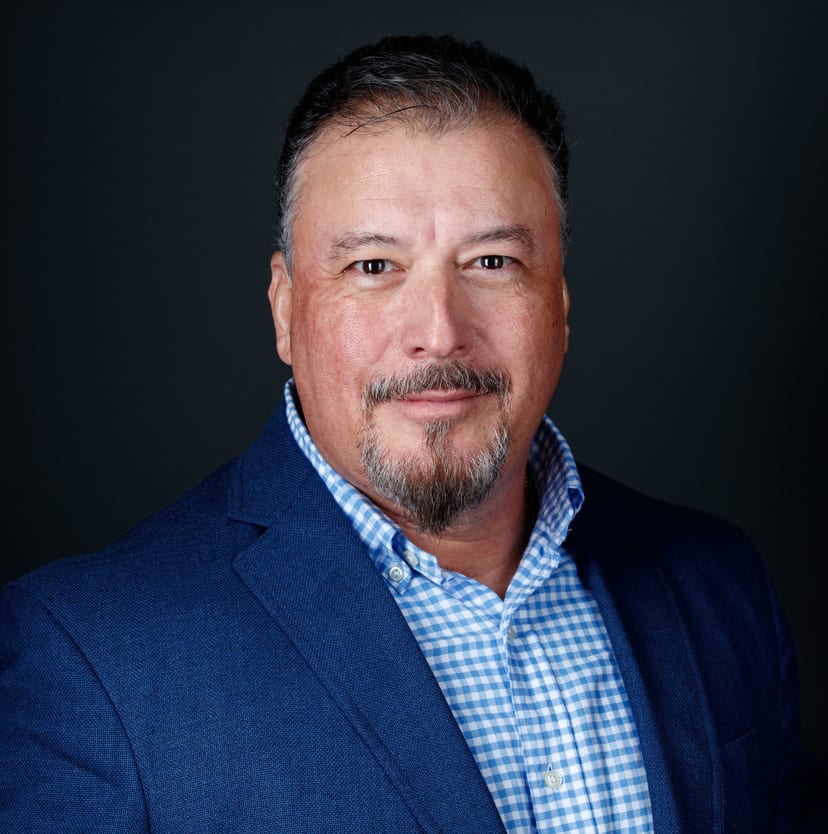september 2022

Special Report / THE MOST INFLUENTIAL PEOPLE IN SECURITY 2022
Most influential MENU
Bio Image courtesy of Garcia
Background image courtesy of metamorworks / iStock / Getty Images Plus / Courtesy of Getty Images

Michael Garcia
K-12 Schools National End User Director
HID Global
By Maggie Shein, Editor in Chief
Michael Garcia, K-12 Schools National End User Director at HID Global (HID), is a fierce advocate for school safety and security. He has spent the past two decades within a variety of sales and marketing roles in both cybersecurity and physical security between the government and education sectors.
Garcia currently manages the K-12 school business vertical in the United States for physical access control solutions at HID — where he’s been for the past four years and counting. His role as a thought leader in the industry and his interest in school safety and security, however, both began much earlier in his career.
“I’ve learned over the years that the security formula is about people, processes and technology — in that order. It all falls down without one of those pieces, but the most important piece within schools is the people,” he says.
After the Columbine High School shooting in 1999, Garcia says he realized that the mental illness and social-emotional learning piece of violence and mass shootings were a critical part of school protection. “I thought, ‘This is a vertical market that needs help.’ With stress, trauma and mental health issues amongst our children, this is going to be a reason and cause for violence at schools,” he says.
And so, just before the Virginia Tech campus shooting in 2006, Garcia and a colleague formed a company called LearnSafe. The idea behind LearnSafe was to offer schools a comprehensive school safety and security platform that combined behavioral intervention, school violence prevention programs, anti-bullying, early threat detection, emergency alerting and security technology, including access control, video surveillance, analytics and cybersecurity.
“I do believe that this was the answer back then to what is happening now, but the truth is, many schools just weren’t ready to take this kind of approach to school safety and security at the time. They would scoff at us and say, ‘We don’t need to focus on behavioral or mental health,’” he says.
Eventually, LearnSafe folded and Garcia found his way to HID, where he says he has been able to “once again evangelize and help schools understand how and why they need security in layers across their districts.” Those layers, he says, are so important because behavioral intervention can act as a critical tool in proactive mitigation of school violence, but in turn, those other layers of procedures, processes, knowledgeable stakeholders with responsibility over security, and technologies all together provide better, more comprehensive protection over campuses.
I’ve made it my life’s work and it’s my hope that people are finally understanding that we need to fix what’s broken in school security. The assets — our children — are worth more than gold, but we aren’t securing schools that way.
Though Garcia has spent his career on the product side of security, his contributions go far beyond the formal titles he has held. He has made it a mission to advocate for and protect students, sitting down with school stakeholders from all parts of the country, many with little or no money to spend on safety and security. He says that there are creative answers to security problems if you are willing to dig deeper.
He recalls a visit with educators years ago at a remote Texas school district near the border of Mexico. The district had no support or resources for school security initiatives, but Garcia noted a presence of city and county law enforcement, the Department of Homeland Security and other agencies around its perimeter because of the school’s location. He advocated for inviting the agents into the school cafeteria for meals in order to build relationships. “Make those relationships, exchange numbers with those agents and when you need them, they will be your first responders,” Garcia recounts.
Then, Garcia and the school looked at empowering the district’s custodians with two-way radios to act as mobile surveillance for trespassers or nefarious activity. Later, Garcia helped the district secure grants for security technology. “Sometimes it’s about starting by patchworking pieces and parts together to create a safer environment for students and staff,” he says. “It’s all about assessing what you have, assessing the risk, and then filling in those gaps, but many schools don’t know where to start. That’s where I come in.”
HID became one of the founding corporate partners for the school security and safety advocacy nonprofit Partner Alliance for Safer Schools (PASS), and Garcia was there from the beginning as well. With HID’s support and encouragement, Garcia and other founding members within PASS have dedicated their time and knowledge educating school stakeholders about using a tiered and layered model of prevention and response for safety and security.
“From the beginning with PASS, my heart was happy being able to sit down with all of these industry thought leaders, talking about school safety and security and how we can fill these huge gaps that exist in our schools,” Garcia says.
When PASS first began, Garcia traveled and lived out of a suitcase, speaking to singular school boards or meetings; coaching school administrators, boards and stakeholders through school safety and security programs, procedures, response, technology and prevention; helping them conduct risk assessments; and aiding them in the grant funding process.
Garcia has dedicated years of time and energy into educating administrators and school stakeholders on safety and security topics, but he still believes that in order for the K-12 sector to address the issue of security as a whole, an imperative shift needs to happen. “I don’t know how to create a curriculum plan and the school board, superintendent or school counselor doesn’t know how to make a security plan,” he says. “In many schools, we have the wrong people with no knowledge or past experience in protection making the wrong decisions. To make this right, we have to have the National School Board Association, the American Association of School Administrators and others get together with the Security Industry Association, the National Association of School Resource Officers, PASS and more to figure this out. Where educators and security experts meet is where we can fix security within our schools.”
Now, Garcia and other founding PASS members take time to speak at national conferences across the country, educating hundreds or thousands of people at a time on PASS’ safety and security protocols, considerations and guidelines in the hopes that they can reach as many people as possible on the subject.
“I’ve made it my life’s work and it’s my hope that people finally understand that we need to fix what’s broken in school security. The assets — our children — are worth more than gold, but we aren’t securing schools that way,” Garcia says. “We need to take a note from the government’s playbook in how they secure their assets and do the same with schools. Just as we haven’t had a plane hijacking since September 11, 2001, I want to get to a place where we never have another child killed in a school. This is a national emergency and we’ve got to treat it as such.”

Impacting enterprises, communities and nations, these 12 security leaders are making a positive difference in the security industry.

september 2022 / SECURITYMAGAZINE.COM













